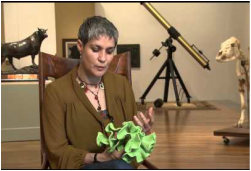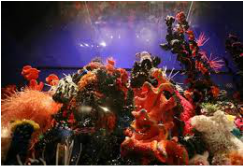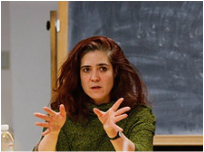Posted by: Dale Griffiths Stamos
How do coral reefs, geometry, crochet, and environmentalism come together? Well ask Margaret and Christine Wertheim, Australian twin sisters who are two of our profile subjects in RenWomen: What Modern Renaissance Women Have to Teach Us About Living Rich, Full Lives. These two sisters are each exceptional in their own fields. Margaret is a trained physicist, mathematician, computer scientist, and has pursued successful careers in science writing, and public speaking. Christine has a PhD in literature, is a poet, critic, performer, museum curator, and teaches creative writing and critical studies at the California Institute of the Arts.
But they have also created an amazing synergy by bringing their various skills together to found the Institute for Figuring, “The mission of the Institute of Figuring,“ explains Margaret, “is to engage people with science and mathematics by looking at the poetic and aesthetic dimensions of these fields.” And there is no better example of this kind of synthesis than their Project Coral Reef, a project which, as the IFF website explains: “resides at the intersection of mathematics, marine biology, handicraft and community art practice, and responds to the environmental crisis of global warming and the escalating problem of oceanic plastic trash.” Whoa! How you may ask, does it do all that?







 RSS Feed
RSS Feed